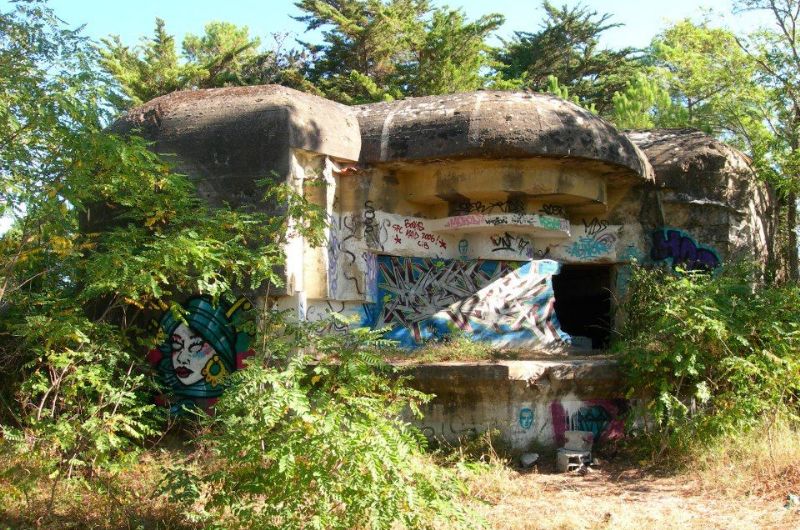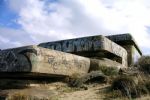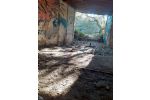Rest Adîer/Cosel battery
- 16
- See on map
The southern tip of the wild coast is home to stùtzpunklgruppe la Coubre (reduced), consisting of a Kriegsmarine radar station, two Kriegsmarine coastal batteries and a circular line of defense occupied by the army. Near the shore, overlooking the Anse de la Palmyre5 , the RestAdler battery (GI09 M1943) was built in 1942 on the site of the former French Navy "Requin" battery. This position (2./MAA 284), under the command of Oberleutnent Zur See Kesting, commanding the 120 troops stationed in the battery, reused the original French armament consisting of 4 x 138 mm die 1910 naval guns. Between 1942 and 1943, the position changed completely. The sheet-pile bunkers were abandoned in favor of 4 marine-type casemates, built 2 by 2 of different types (M272, M 176), staggered in a half-moon shape behind the two-level M162a fire direction post, equipped with an l.5m rangefinder. These casemates had a very special, highly sophisticated camouflage. In fact, very conspicuous when seen from the open sea and sky, they were made up with olive lines and spots, giving them the appearance and color of the dune. The tubes of the 138 mm guns were also painted and covered with camouflage netting. The direct defense of Bonne Anse beach was under fire from 2 H 669 casemates armed with 76.2 mm FK 295 (f) guns, flanking the battery at the ends. On the land side, the Kriegsmarine position was protected from French attack by a tobrouk-mounted FT 17 tank turret, complemented by a dozen emplacements for sMG 34s and flamethrowers. Under the code name Gi 8H 1943, the defensive belt of the Coubre reduction employs an incredible number and variety of concrete works. The Wesel Flakberg battery, an anti-aircraft base, was one of them. On the eve of the French attack on April 13, 1945, it consisted of 6 M33 f 75 mm guns and received 3 tons of bombs, then 200 tons over the following days. The position held up well, although it lost 2 50 mm mortars and tobrouks, and 2 of its guns were damaged. The battery had no crenellations, only wooden platforms camouflaged with branches. The guns and rangefinder in the center were therefore highly vulnerable to a determined attack by Allied aircraft. The close defense of the Gi 8 H 1943 suite was ensured by numerous sMg 15s and 34s backed up by toboggan-mounted 50 mm mortars, all linked by a dense network of trenches, traces of which can still be seen today, accentuating the fortress effect. Around the site, a dozen H 501/H 502 concrete shelters were built to shelter the defenses in the event of an Allied air attack. Source. GOURMELON G, LEMERLE E. Inventory of the remains of the Atlantic Wall. Tl





